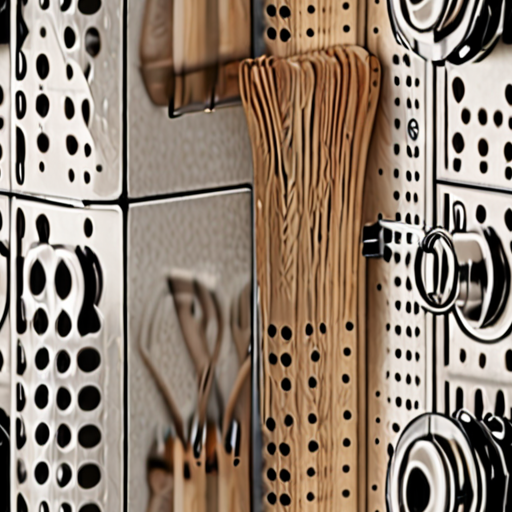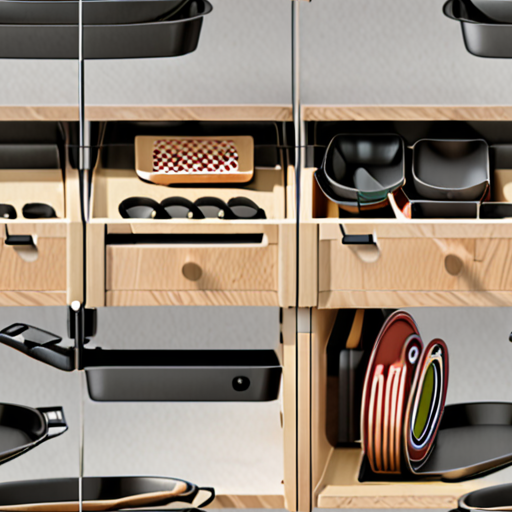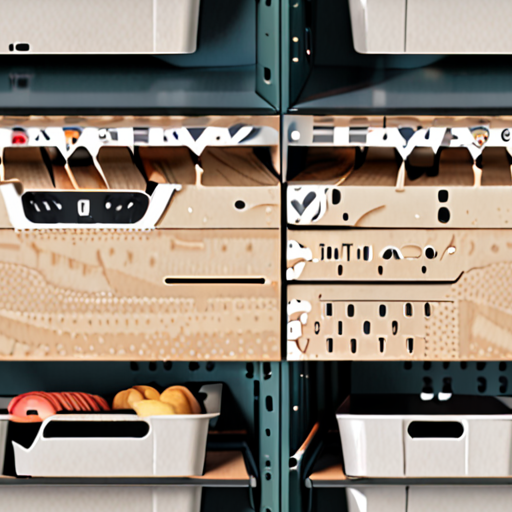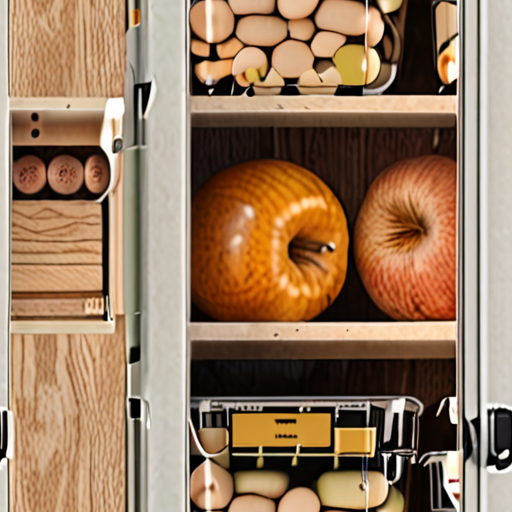Are you tired of feeling like your kitchen is cluttered and disorganized? Do you struggle to find space for all your cooking essentials and ingredients? If so, you’re not alone. Many homeowners face the challenge of maximizing their kitchen storage space, but it doesn’t have to be a daunting task. With the right strategies and solutions, you can optimize your kitchen space and enjoy a more efficient, stress-free cooking experience.

Adding More Storage to Your Kitchen
We understand that having ample storage in your kitchen is crucial for maintaining organization and efficiency.
- Pull-out pantries and spice racks can be installed under countertops or in corners to maximize vertical space.
- Consider investing in a kitchen cart or island with built-in storage, drawers, and shelves to keep essentials within easy reach.
- Utilize wall-mounted shelves, hooks, and baskets to store infrequently used items, freeing up cabinet space for frequently used dishes and cookware.
- Install a pegboard on a wall or the back of a door to hang pots, pans, utensils, and accessories, keeping them organized and easily accessible.
- Invest in stackable containers and bins to store dry goods, snacks, and cleaning supplies, keeping your countertops clutter-free.
- Take advantage of dead space between appliances and cabinets by installing a slide-out trash can or recycling bin.
- Consider adding a kitchen table with built-in storage, such as a drop-leaf table with a storage compartment underneath.
- Make the most of your ceiling height by installing a pot rack or a hanging organizer for infrequently used items.
- Invest in a kitchen appliance garage to store small appliances, such as toasters and blenders, keeping them out of sight and reducing clutter.
- Utilize the space behind doors by installing a magnetic board or a shoe organizer to store spices, oils, and other essentials.
- Consider adding a kitchen desk or workstation with built-in storage, such as a drawer or a shelf, to keep office supplies and paperwork organized.
By implementing these creative storage solutions, you’ll be able to optimize your kitchen’s functionality and maintain a clutter-free environment.
For more kitchen organization ideas and inspiration, visit our Kitchen Design Ideas page.
Additionally, check out our Small Kitchen Storage Ideas guide for more tips and tricks on maximizing your kitchen’s storage potential.
At Peck and Gartner, we’re dedicated to helping you create a functional and beautiful kitchen that meets your needs and enhances your lifestyle.
Three Essential Types of Storage in a Kitchen
We believe that effective kitchen storage is crucial for maintaining a clutter-free and organized cooking space.
- Zone 1: Base Cabinets
- Soft-close drawer glides for smooth operation
- Adjustable shelf dividers for optimal organization
- Durable finishes resistant to scratches and stains
- Zone 2: Upper Cabinets
- Height and width to accommodate your ceiling and wall space
- Material and finish to match your base cabinets
- Shelf configurations to optimize storage and accessibility
- Zone 3: Open Shelving
- Material and finish to complement your cabinetry
- Depth and width to accommodate your storage needs
- Adjustable brackets for customizable installation
Base cabinets are typically installed along the floor and provide ample storage for dishes, cookware, and cleaning supplies.
They often feature adjustable shelves and drawers, allowing you to customize the storage configuration to suit your needs.
When selecting base cabinets, consider factors such as material, finish, and durability to ensure they withstand heavy use.
Some popular options include:
Upper cabinets are mounted on walls and offer storage for less frequently used items, such as special occasion dishes or infrequently used cookware.
They can also house decorative items, like fine china or glassware, adding visual appeal to your kitchen.
When choosing upper cabinets, consider factors such as:
Open shelving provides a stylish and accessible storage solution for frequently used items, such as cookbooks, oils, and spices.
It allows you to display decorative items, like vintage cookware or ceramics, adding personality to your kitchen.
When installing open shelving, consider factors such as:
By incorporating these three essential types of storage into your kitchen design, you’ll enjoy a more efficient, organized, and visually appealing cooking space.

Maximizing Kitchen Cabinet Storage
As a homeowner, maximizing kitchen cabinet storage is crucial for maintaining a clutter-free and organized cooking space.
- Start by purging your cabinets of unnecessary items and donating or recycling what you no longer need.
- Invest in adjustable shelving and dividers to optimize vertical space and keep items organized.
- Utilize the back of cabinet doors with hooks, baskets, or a pegboard to store infrequently used items or accessories.
- Consider installing pull-out drawers or lazy susans to access hard-to-reach items with ease.
- Make the most of corner spaces with turntables or carousel units to store spices, oils, or other small items.
- Implement a “first-in, first-out” policy to ensure older items are used before they expire or become obsolete.
- Label and categorize contents within each cabinet to facilitate quick identification and retrieval.
- Regularly clean and dust cabinets to prevent pest infestations and maintain a hygienic environment.
- Take advantage of under-sink storage solutions, such as slide-out trays or baskets, to stash cleaning supplies and chemicals.
- Install a pot rack or hanging organizer near the stove to free up cabinet space and keep cookware within easy reach.
- Consider investing in a kitchen cart or island with built-in storage to supplement your existing cabinetry.
- Don’t forget to utilize the space above your cabinets with floating shelves or a decorative storage unit to display favorite cookbooks, utensils, or decorative items.
By implementing these strategies, you’ll be able to maximize your kitchen cabinet storage, reduce clutter, and enjoy a more efficient and enjoyable cooking experience.

Storing Food Without Cabinets
We understand that having a pantry or cabinets in your kitchen isn’t always possible, whether you’re renting or have limited storage space.
- One effective solution is to utilize a rolling trolley in the kitchen to store food items.
- Trolleys come in various sizes and designs, making them versatile and convenient for storing food and other essentials.
- The best part about using a rolling trolley is its mobility – you can easily move it around your kitchen depending on your needs.
Alternative Storage Options
If a rolling trolley isn’t feasible, consider these alternative storage options:
- Utilize wall-mounted shelves or hooks to maximize vertical space and keep frequently used items within easy reach.
- Invest in stackable containers or baskets to store dry goods, canned foods, and other non-perishables.
- Consider a kitchen cart or island with built-in storage to provide additional counter space and storage capacity.
Benefits of Efficient Storage
A well-designed storage system can greatly benefit your kitchen and overall cooking experience.
- Efficient storage helps maintain a clutter-free kitchen, reducing stress and making meal prep easier.
- By keeping essential items organized, you’ll save time searching for what you need and minimize waste.
- A well-stocked pantry and efficient storage system can also inspire creativity in the kitchen and encourage healthy eating habits.
Peck and Gartner’s Expert Tips
At Peck and Gartner, we believe that every homeowner deserves a beautifully designed and functional kitchen.
- Our team of experts recommends investing in multi-functional storage solutions that cater to your unique needs and preferences.
- We also suggest exploring innovative storage products, such as smart pantries and automated storage systems, to stay ahead of the curve.
- Remember, efficient storage is key to a happy and productive kitchen – don’t compromise on quality and functionality!
Organizing a Kitchen Without Upper Cabinets
We understand that having limited cabinet space can be frustrating, but there are many creative ways to organize a kitchen without upper cabinets.
- Open Shelving: Install floating shelves or open shelving units to display dishes, cookbooks, and other kitchen essentials. This adds visual interest and makes it easy to access frequently used items.
- Hanging Racks: Utilize wall-mounted hooks or hanging racks to store pots, pans, utensils, and spices. This keeps countertops clutter-free and makes the most of vertical space.
- Freestanding Furniture: Consider adding a kitchen cart, island, or trolley to provide additional storage and counter space. These pieces can be easily moved around to accommodate changing needs.
- Decorative Containers: Use attractive containers, matching storage jars, and coordinated baskets to store dry goods, snacks, and cleaning supplies. Label each container to ensure everything stays organized.
- Plants and Artwork: Add some personality to your kitchen by incorporating plants and artwork. This creates a welcoming atmosphere and distracts from the lack of upper cabinets.
- Pegboards: Install a pegboard on a wall or the side of a cabinet to hang frequently used items like knives, spatulas, and oven mitts.
- Magnetic Strips: Use magnetic strips on walls or the sides of cabinets to store spices, oils, and other metal items.
- Under-Sink Storage: Maximize the space under your sink by installing a slide-out drawer or a pull-out trash can.
- Cabinet Organizers: Invest in adjustable dividers, basket inserts, or turntables to optimize the space within your lower cabinets.
- Countertop Organization: Use tray organizers, utensil holders, and spice racks to keep countertops tidy and functional.
- Label Maker: Invest in a label maker to identify contents within containers, drawers, and cabinets, making it easier to find what you need quickly.
By implementing these creative solutions, you can create a functional and visually appealing kitchen without upper cabinets.

Can We Really Store Food Indefinitely?
We’ve all been there – wanting to enjoy our favorite foods for months to come without worrying about spoilage.
- While it may seem like science fiction, storing food indefinitely is indeed possible, albeit with certain limitations and requirements.
- The key lies in understanding the principles of food preservation and utilizing the right techniques to extend shelf life.
Understanding Food Preservation
Food preservation involves methods that prevent or slow down the growth of microorganisms, oxidation, and enzymatic reactions that cause food spoilage.
- Dehydration removes moisture, making it difficult for bacteria and mold to grow.
- Canning uses heat to kill off bacteria and create a vacuum seal, preventing re-contamination.
- Fermentation allows lactic acid production, which acts as a natural preservative.
- Freezing slows down chemical reactions, preserving nutrients and texture.
Storage Requirements
To store food indefinitely, we need to create an environment that mimics the conditions found in nature, such as caves or root cellars.
- Air-tight containers or Mylar bags can be used to remove oxygen and prevent contamination.
- Darkness prevents photosynthesis and reduces the risk of spoilage.
- Consistent temperatures between 32°F and 50°F (-0°C and 10°C) slow down chemical reactions.
- Low humidity levels prevent moisture accumulation and subsequent spoilage.
Examples of Indefinite Storage
Several types of food have been successfully stored indefinitely using these methods:
- Dried legumes, grains, and nuts can last for decades when properly sealed and stored.
- Canned goods, such as vegetables and meats, can remain edible for years when stored in a cool, dark place.
- Frozen foods, like meat and fish, can be preserved for extended periods when stored at 0°F (-18°C) or below.
Conclusion
Storing food indefinitely requires careful consideration of preservation methods and storage conditions.
By understanding the principles of food preservation and creating an optimal storage environment, we can enjoy our favorite foods for months to come.

0 Comments